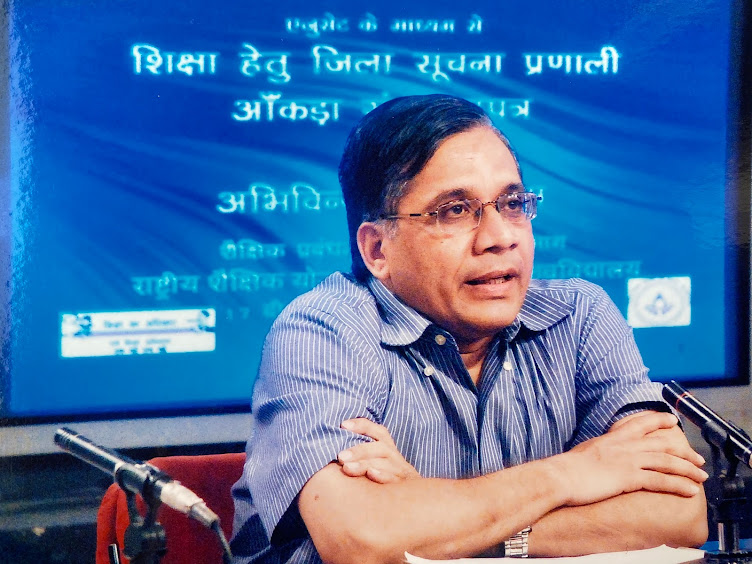Former Professor & Head of the EMIS Department, NIEPA, New Delhi
DISE (District
Information System for Education) which later become the UDISE and is now
popularly known as Unified-DISE or UDISE-plus was initiated in 1994-95 at the
time of launching one of the mega programs of the Government of India toward
universal primary education i.e. District Primary Education Programme (DPEP),
over a period of time in a phased manner the same was extended first to the
entire elementary level of education (Sarva
Shiksha Abhiyan) and later to the secondary and higher secondary level of
education (RMSA). The entire collection of school education data is being
managed through the UDISE which has become the only source of statistics on school
education in India with effect from the year 2012-13, the year in which the
UDISE got the status of official statistics
and all parallel collection of the information system was abandoned and UDISE
remain the only source of information on school education statistics in India.
Even though widespread improvements were
achieved in data collected through UDISE, but fingers have been raised on
enrolment data collected through it which do not consider to be consistent which
is reflected in the Table presented below:
Enrolment in Grades I to XII, 2012-13 to 2019-20All India
Year | Enrolment | ||
Total, Grades I to XII | Change over Previous Year | %age Change | |
2012-13 | 25,42,75,128 | - | |
2013-14 | 25,85,10,656 | 42,35,528 | 1.67 |
2014-15 | 25,94,70,306 | 9,59,650 | 0.37 |
2015-16 | 26,05,96,960 | 11,26,654 | 0.43 |
2016-17 | 25,13,36,317 | -92,60,643 | - 3.55 |
2017-18 | 25,09,89,193 | -3,47,124 | - 0.14 |
2018-19 | 24,83,38,584 | -26,50,609 | -1.06 |
2019-20 | 25,09,71,683 | 26,33,099 | 1.06 |
2020-21 | 25,38,04,461 | 28,32,778 | 1.13 |
Change over 2012-13 | - | -33,03,445 | - 0.19 |
SDMIS: 2016-17
Over a period of time, efforts were made to
further improve the reliability and consistency of enrolment data among which
the introduction of SDMIS in sync with UDISE in 2016-17 was the most prominent
one which was initiated by NIEPA in consultation with the Department of School
Education of the Ministry of HRD/Education. A specially designed SDMIS Data
Capture Format was launched which initially had a total of 41 parameters and
the idea was to generate UDISE enrolment based on the details of individual
student information. Apart from the inconsistency of data, mismatching of
enrolment by category, the medium of instructions, and age was another major
issue because of which UDISE enrolment data was not considered reliable even
though time lag in educational statistics was brought down from earlier 7 years
to less than a year at the national level and only a few months at the state
and district levels apart that all data gaps were bridged and the same was made
available to users at all the levels, such as cluster, block, district, states
and also at the national level.





